Seat Belt
Fastening the Seat Belt
1. Grasp the seat belt tongue.
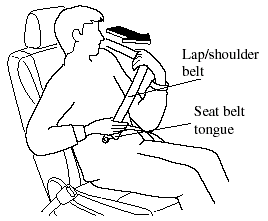
2. Slowly pull out the lap/shoulder belt.
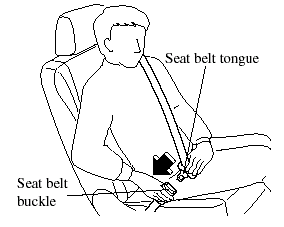
3. Insert the seat belt tongue into the seat belt buckle until you hear a click sound.
WARNING:
Positioning the Shoulder Portion of the
Seat Belt:
Improper positioning of the shoulder
portion of the seat belt is dangerous.
Always make sure the shoulder portion of the seat belt is positioned across your shoulder and near your neck, but never under your arm, on your neck, or on your upper arm.
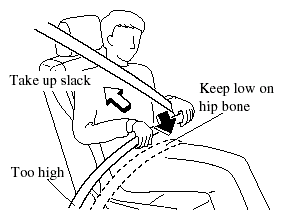
4. Position the lap belt as low as possible, not on the abdominal area, then adjust the shoulder belt so that it fits snugly against your body.
WARNING:
Positioning the Lap Portion of the Seat
Belt:
The lap portion of the seat belt worn
too high is dangerous. In a collision,
this would concentrate the impact
force directly on the abdominal area,
causing serious injury. Wear the lap
portion of the belt snugly and as low
as possible.
Unfastening the Seat Belt
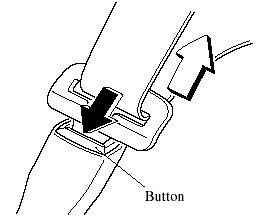
Depress the button on the seat belt buckle.
If the belt does not fully retract, pull it out and check for kinks or twists. Then make sure it remains untwisted as it retracts.
NOTE:
If a belt does not fully retract, inspect it for
kinks and twists. If it is still not retracting
properly, have it inspected at an Authorized
Mazda Dealer.
Front Shoulder Belt Adjuster
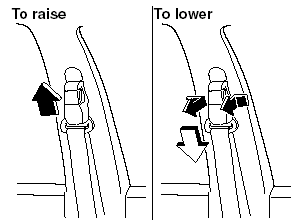
Adjust the height of the shoulder belt if the seat belt touches your neck, or if it crosses your arm instead of your shoulder.
To raise the shoulder belt adjuster, push the adjuster up. To lower the shoulder belt adjuster, pull the adjuster and slide it down. Make sure the adjuster is locked.
WARNING:
Positioning the Shoulder Portion of the
Seat Belt:
Improper positioning of the shoulder
portion of the seat belt is dangerous.
Always make sure the shoulder portion of the seat belt is positioned across your shoulder and near your neck, but never under your arm, on your neck, or on your upper arm.
See also:
Accessory Sockets
The ignition switch must be in the ACC
or ON position
Only use genuine Mazda accessories or
the equivalent requiring no greater than
120 W (DC 12 V, 10 A).
Front (Type A)
Front (Type B)
R ...
Rear Window Defroster
The rear window defroster clears frost,
fog, and thin ice from the rear window.
The ignition must be switched ON.
Press the switch to turn on the rear
window defroster. The rear window
defroster ...
Six-Speed Automatic Transmission with Manual Shift Mode
These engine technologies are combined with a six- speed automatic
transmission with manual shift mode as standard equipment. This transmission
provides an optimal balance between acceleration, ri ...


